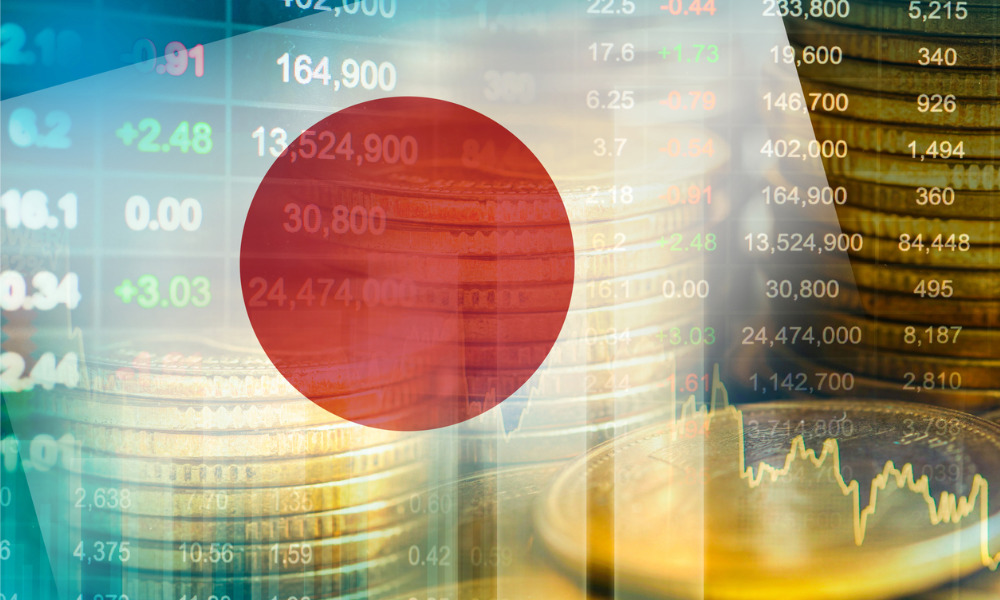CEO of global asset manager explains why he sees Japanese stocks at an "inflection point"

In the three decades since its bubble burst, Japan has frustrated, perplexed, and disappointed investors. Its stock market has reflected an economy deeply entrenched in deflation. At a number of periods in the last 30 years investors flocked to Japan hoping attractive valuations in the world’s 3rd largest economy could mean a sustained bull rally. That rally has never fully manifested, until this year.
The Japanese benchmark indices Topix and the Nikkei 225 have both hit their highest points since 1989 this year. Thanks to a confluence of cyclical forces, demand shifts, and key policy decisions, investors are enjoying significant returns from Japanese equities. While some of what buoyed performance in Japanese stocks this year reflects some potentially shorter-lived trends, Tyler Mordy sees this rise as a potential “inflection point” for Japanese equities. The CEO & CIO at Forstrong Global Asset Management explained why he’s more constructive on Japan than ever before, and how advisors might want to view the country’s stock market going forward.
“Our view is that we are at a key inflection point, because we’re beginning to see a virtuous economic cycle emerging,” Mordy says. “We’re moving out of deflation and we are starting to see that trend manifest itself in things like higher nominal wage growth. Corporations are also acting differently than they have in the past. Wage growth and capital spending were the missing elements of all past cycles. But we need to continue monitoring if that virtuous cycle leads to, at long last, escape velocity for the Japanese economy. The probabilities are that it does.”
Mordy explains that this virtuous cycle began in Japan with the COVID-19 pandemic. That shock has shifted many countries out of the disinflationary decade of the 2010s, but the onset of inflation in Japan can be widely considered a positive shock after decades of deflation. Japanese CPI topped 4% earlier this year, the highest it’s been since 1990. While that level of inflation is mild by global standards, it’s driven by many of the same factors around global uncertainty and supply chain disruptions that spurred inflation in Western economies. However, Mordy sees Japan transitioning gradually from this kind of ‘cost-push’ inflation to a level of ‘demand-pull’ inflation powered by a stronger consumer and stronger capital spending.
The Japanese labour market has been tight for years, and the country’s aging demographics have often seemed unattractive. However, the country’s push under the late Shinzo Abe to grow the labour force through female participation has largely run its course, and we are beginning to see meaningful wage growth in Japan.
Corporate profitability has improved, too, and big corporations are more capable of meeting demands for higher wages. Mordy sees this improvement as resulting in more capital expenditures, increased demand, and higher employment which could push growth higher.
In part as a result of diverging monetary policies around the world, with the Bank of Japan refusing to lift interest rates , Mordy says the yen is now deeply undervalued. The upside is that the cheap currency gives Japan an advantage on export markets. There is also a growing demand for the goods Japan exports. Japanese stocks are heavily skewed towards industrials, which Mordy sees benefitting from a growing global demand for manufactured goods in what he calls “the revenge of the real economy.” It’s notable too, that Japanese stocks have performed well while growth has slowed in China, Japan’s biggest export market. When Chinese growth resumes it could create an even rosier picture for Japanese equities.
Regulatory change has also been a boon for Japanese stocks. The stronger domestic consumer is more incentivized to invest. Japan has launched a version of the TFSA as the government has pursued more shareholder-friendly policies. The Tokyo Stock Exchange has called on companies to focus on achieving sustainable growth and enhancing corporate value, which has been met by more buybacks and dividends from key Japanese stocks. Those stocks, Mordy says, already have a valuation advantage against the rest of the world on a price to book basis. As well, many international investors see Japan as a safe haven economy. As geopolitical uncertainty grows, Japanese stocks look more attractive for international capital.
Mordy acknowledges there are risks inherent in the Japanese stock market. The country has seen many false starts since its bubble burst in the 90s. The weak yen and the Bank of Japan’s maintenance of a zero-rate policy could continue to lead to imported inflation. iHowever, if the central bank does finally normalize monetary policy and move away from zero interest rates there could be a rally in the yen and the resumption of deflationary pressure. Moreover, Japan’s high level of government debt means policymakers need to remain very careful. Despite these factors, Mordy believes that the improving prospects for consumers and corporations in Japan are enough to power this virtuous cycle further.
The opportunity for Canadian advisors and investors, Mordy says, lies in the fact that Japanese equity valuations are still attractive despite their rally this year. The depressed yen acts as a counterbalance to Japanese stocks, and can serve as a shock absorber during more risk-off periods in global markets. That means Canadian investors could profit from either their exposure to Japanese stocks, or their exposure to the yen. Mordy notes that Forstrong runs an internationally focused suite of ETFs that actively manage Japanese exposure within their globally balanced and international equity strategies.
“Japan is now a solidplace to investand a great addition to a balanced portfolio,” Mordy says. “You can point to a long list of structural and macroeconomic factors that are different now than in the false dawns we’ve seen since 1990. All of this strongly argues that we have moved away from the value trap of the last three decades.”



